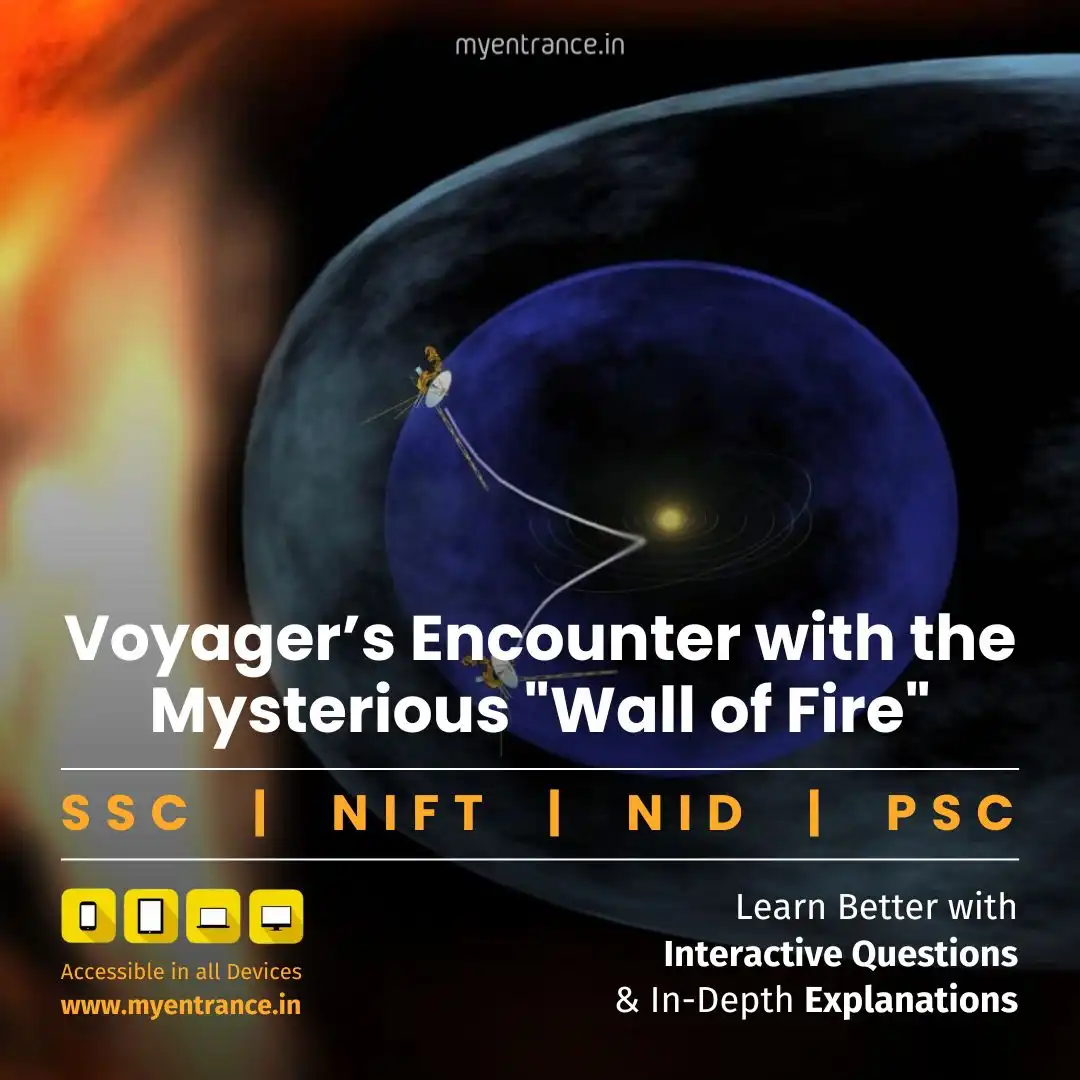Select Language
What Lies Beyond the Sun’s Reach? Voyager Reveals a Scorching Cosmic Boundary
For over four decades, NASA’s Voyager probes have ventured deeper into space than any human-made object, revealing secrets at the edge of our solar system. Their latest discovery? A scorching “wall of fire” marking the boundary between the Sun’s domain and the vast unknown of interstellar space.
NASA’s Voyager Probes Reveal a Fiery Barrier Beyond the Solar System
In an extraordinary breakthrough, NASA’s Voyager 1 and Voyager 2 have crossed the solar system’s final frontier, uncovering a searing, high-energy barrier at the edge of the Sun’s influence. Dubbed the “wall of fire,” this intense region lies in the heliopause, the boundary where solar winds collide with interstellar forces.
The Voyager Missions: Journey to the Edge
Launched in 1977, the twin Voyager probes were initially sent to study Jupiter and Saturn. However, their missions extended far beyond, pushing into the farthest reaches of the solar system.
Voyager 1 became the first spacecraft to exit the heliosphere in 2012, entering interstellar space.
Voyager 2 followed in 2018, confirming earlier findings with new data.
Both probes detected a sudden temperature spike—30,000 to 50,000 Kelvin (54,000–90,000°F)—as they crossed the heliopause.
Despite its name, the “wall of fire” isn’t a solid barrier but a turbulent zone where solar and interstellar winds clash, generating extreme heat. Fortunately, space’s near-vacuum means the probes weren’t melted—particles are too sparse to transfer significant heat.
What Is the Heliosphere?
The Sun constantly emits charged particles (solar wind), forming a protective bubble around the solar system called the heliosphere.
This bubble stretches three times farther than Pluto’s orbit.
The heliopause marks where solar winds weaken against interstellar forces.
Beyond it, interstellar space begins, dominated by winds from other stars.
NASA explains:
“The boundary between solar wind and interstellar wind is the heliopause, where the pressure of both winds balances out, forcing solar wind to turn back.”
Surprising Magnetic Field Findings
Voyager’s instruments revealed another mystery: the magnetic field beyond the heliopause aligns with the Sun’s magnetic field.
Voyager 1 first detected this alignment in 2012.
Voyager 2 confirmed it in 2018, proving it wasn’t a fluke.
Scientists are still studying why this alignment occurs, reshaping theories about interstellar space.
Why This Discovery Matters
The Voyagers’ findings help scientists understand:
✔ How the Sun interacts with interstellar space.
✔ The nature of cosmic boundaries and energy transfer.
✔ Future interstellar missions’ potential challenges.
These discoveries remind us that even after 45+ years, the Voyager probes continue to revolutionize space science.
Sample Questions & Answers
1. What is the “wall of fire” discovered by NASA’s Voyager probes?
Answer: It’s a high-temperature region at the heliopause where solar winds clash with interstellar winds, creating extreme heat (30,000–50,000 K).
2. When did Voyager 1 and Voyager 2 cross the heliopause?
Answer: Voyager 1 crossed in 2012, and Voyager 2 followed in 2018.
3. Why wasn’t the Voyager spacecraft destroyed by the “wall of fire”?
Answer: Space is mostly empty, so particle collisions (and heat transfer) are rare, allowing the probes to survive.
4. What is the heliosphere?
Answer: A vast bubble formed by the Sun’s solar wind, shielding the solar system from interstellar radiation.
5. What surprising magnetic field discovery did the Voyager probes make?
Answer: The magnetic field beyond the heliopause aligns with the Sun’s, challenging previous assumptions.
Most Predicted Questions
Comprehensive study materials, Expert-guided tips & tricks, Mock tests and instant results.
Start your SSC, NIFT, NID, FDDI, PSC journey today with MyEntrance, your ultimate online coaching platform.








